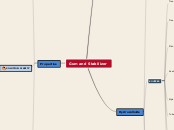a Nurul Husna Mohamad Ridzuan 9 éve
402
Gum and Stabilizer

a Nurul Husna Mohamad Ridzuan 9 éve
402

Még több ilyen
Hydroxypropylmethylcellulose
Methylcellulose
Konjac, Arabic gum,
Xanthan, Gellan
Na alginate, Guar, Tara
Agar, Gelatin
Tragancanth, Karaya
HMP & LMP
Microcrystalline cellulose
Konjac
Polypropylene Glycol Alginate
Guar
Refined Locust Bean Gum
Cellulosics : Carboxymethycellulose(CMC), Methycellulose(MC), Hydroxypropylmethycellulose(HPC)
Celluose derivatives
Subtopic
Microcrystalline cellulose (MCC)
Polypropylene Glycol Alginate (PGA)
Tragancanth
Gellan
Xanthan
Konjac mannan
Iota carrageenan
Kappa carrageenan
Xanthan gum & LBG/Konjac glucomannan
Whey protein
Gellan gum
Dextran
Konjac glucomannan
Brown seaweeds
Red seaweeds
Agar
Tamarind gum
Tara gum
Starch
Gum tragancanth
Gum ghatti
Gum karaya
Formation of film
Encapsulation
Control of crystallisation
Suspension of particulates
Stabilization of emulsion
Gelling
Thickening agents